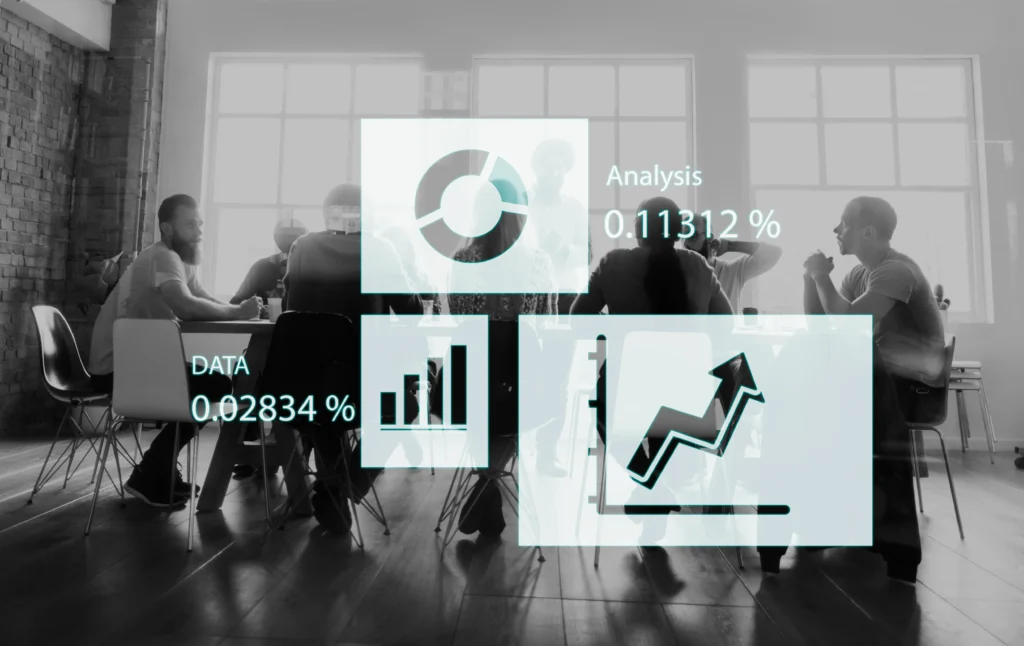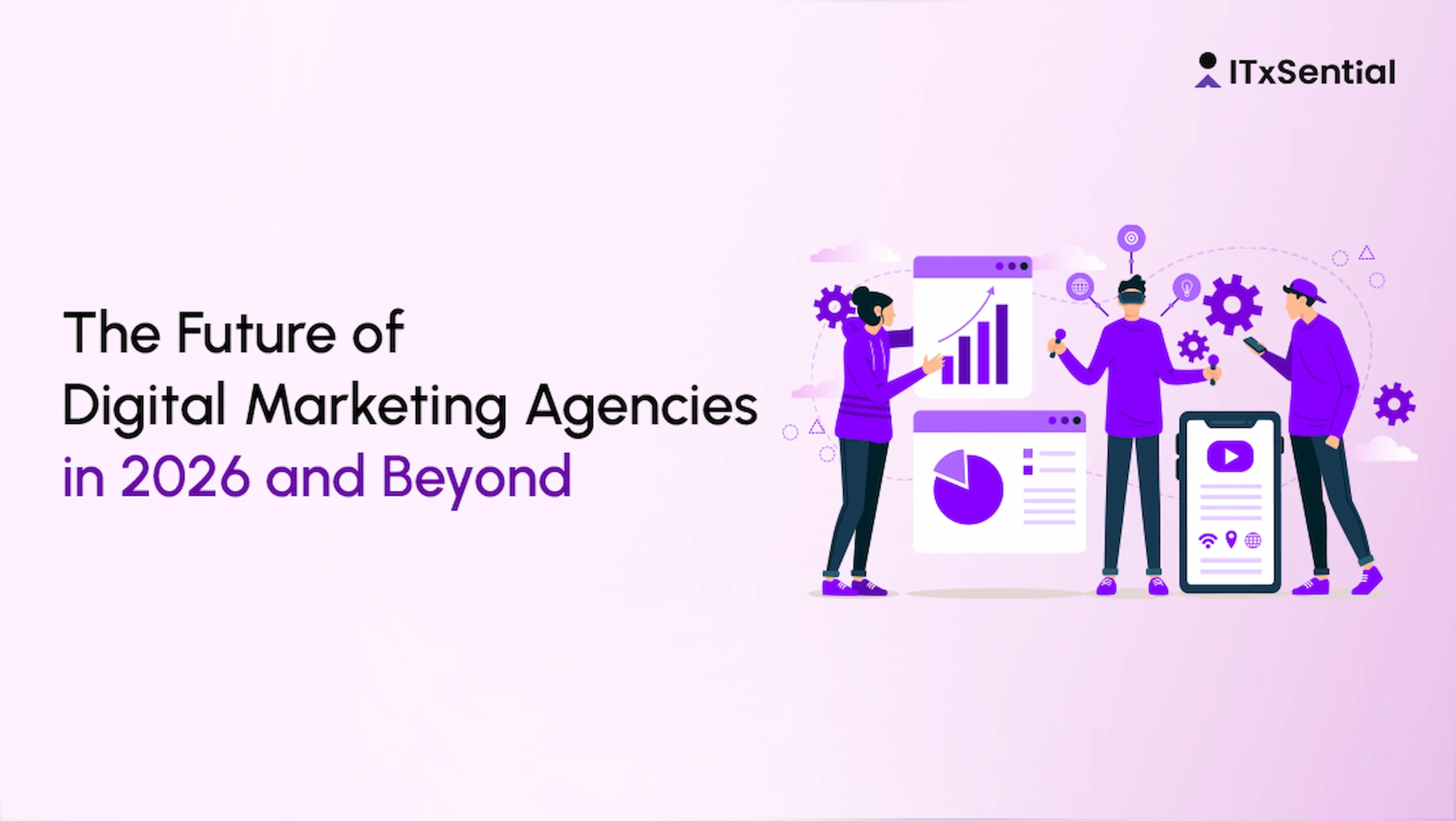Introduction
Thinking about the future of digital marketing agencies in 2026 isn’t theoretical anymore — it’s practical planning. Over the next couple of years the industry won’t change by a single big shock but by many steady shifts: smarter automation, stronger privacy rules, evolving client expectations, and tighter links between marketing and product/engineering. For agencies that adapt, this is an era of opportunity; for those that cling to old structures, it will be a struggle to stay relevant.
This article explains those shifts in plain language and in paragraph form (fewer bullet lists), so you can read through and walk away with concrete ideas for your agency or marketing team. I keep the tone practical and the language simple because the best strategy is the one people actually use.
Why 2026 matters For Digital Marketing Agencies

Two things make 2026 a good milestone. First, the steady rollout of privacy changes and new platform rules has already pushed companies to rethink tracking and measurement; by 2026 those systems will be much more mature. Second, AI tools that felt experimental in 2023–2024 are becoming integrated into workflows. Put those together and you end up with agencies that are either comfortable operating in a privacy-first, AI-assisted world — or agencies that are still chasing impressions without measurable business value. The difference will determine which agencies survive and which ones thrive.
The changing role of agencies
In the past, agencies were judged mostly by creative ideas and media placement: did the ad look good, and did it reach enough people? Moving toward Future of Digital Marketing Agencies in 2026, that simple checklist is no longer enough. Clients want measurable outcomes — not just clicks, but real business results like acquisition cost, retention, and revenue per customer. Agencies must therefore become hybrid organizations: creative at heart, but technically fluent enough to handle first-party data, measurement design, and integration with client systems.
Concretely, this means many agencies will stop selling isolated campaigns and start selling repeatable systems: data collection and activation, continual creative testing, and cross-channel orchestration. Those systems require different skills and different organizational structures, and agencies that don’t change their hiring, pricing, and delivery models will find themselves outcompeted.
Technology: AI as an everyday tool
AI will no longer be a special project — it will be a toolbox in the daily workflow. Expect agencies to use generative models to speed up ideation and produce dozens of creative variants in hours, not weeks. Expect programmatic bidding and optimization that combine machine learning with human decision rules. Expect personalization frameworks that create dynamic landing pages and tailored messages based on customer segments or real-time signals.
That said, speed isn’t the same as strategy. The agencies that succeed will be the ones that pair AI’s velocity with human judgment. AI can produce variants and suggest optimizations, but brand voice, long-term positioning, ethical considerations, and the interpretation of complex business goals require human oversight. The best agencies will therefore build processes and guardrails that make AI outputs reliable and aligned with strategy.
Data and privacy: first-party becomes fundamental
As third-party cookies and permissive tracking decline, first-party data becomes the backbone of any sustainable marketing program. This doesn’t mean hoarding customer data — it means asking for consent in clear ways, designing valuable exchanges (discounts, better service, early access) that motivate customers to share information, and centralizing that data so it can be used for personalized experiences without violating privacy.
Agencies will add value by helping clients design these flows and by operating the systems (CDPs, clean rooms, measurement frameworks) that turn consented data into action. That work is different from buying media; it’s technical and procedural, and it requires agencies to learn about data governance, security, and legal compliance. Agencies that become trusted data stewards will be rewarded with deeper client relationships.
Commercial models: outcome orientation and shared risk
Clients are tired of paying for activity with unclear ROI. That’s pushing a shift from time-and-material retainers to outcome-oriented agreements. In practice, outcome-based work can take many forms: a bonus for reaching agreed KPIs, a revenue share for clearly attributable sales, or a fee model tied to customer lifetime value improvements.
This model aligns incentives but increases complexity. Future of Digital Marketing Agencies in 2026 must be better at establishing baselines and measuring incremental impact. Measurement becomes a product: you need rigorous experiments, holdout groups, or clean-room analyses to show what the agency actually drove. Agencies that can demonstrate reliable incremental value will command higher fees and longer commitments.
Organizational change: squads over silos
The old agency structure — separate departments for creative, media, and analytics — slows everything down. The future favors cross-functional squads where a small team with creative, media, data, and engineering skills owns a client’s outcome end to end. These squads move in short cycles, test often, and iterate based on real metrics.
This model reduces handoffs and improves accountability. It also changes hiring: you need people who can collaborate across disciplines, and you need technical roles that understand business KPIs. Agencies that rewire their org charts for this approach will be faster and more effective.
New channels and experiences
Not every new channel becomes mainstream, but by 2026 immersive and commerce-driven experiences — shoppable video, AR try-ons, voice interaction in commerce contexts — will be profitable in specific verticals like fashion, beauty, gaming, and home goods. Agencies that pilot these channels responsibly and prove incremental revenue will capture innovation budgets from forward-looking brands.
The practical takeaway is to maintain a small, well-documented experimentation budget and process. Don’t bet the business on every shiny new channel, but do test where the audience and product fit naturally.
Ethics, transparency, and trust
Consumers and regulators both care more about how data and AI are used. Agencies will need to be clear about their privacy practices, their use of AI, and the provenance of data. That transparency becomes a selling point. Brands are more likely to choose partners who can explain their models, share governance practices, and demonstrate care for user privacy. The agencies that hide their methods or treat AI as a magic black box will lose trust.
Practical steps for agencies today
You don’t have to reinvent the wheel overnight. Start by strengthening three areas: data, measurement, and team structure. Put a CDP or a clean way to centralize consented customer information on your roadmap. Run one or two formal incremental tests to show you can measure lift reliably. Move toward a squad structure for at least one pilot client, and document the results. Finally, build basic AI governance: style guides, prompt libraries, and a review process so outputs align with brand standards.
These steps are practical and incremental, but they compound fast. Each small improvement makes the next one easier and more credible.
What brands should ask agencies in 2026
If you’re hiring an agency, ask practical questions that reveal capability and mindset. Ask how they measure incremental impact, how they handle first-party data, and what safeguards they use when leveraging AI. Ask whether their teams include engineers or data specialists, and how they structure work — do they operate in cross-functional squads or in traditional silos? Answers to these simple questions reveal whether an agency is oriented toward short-term activity or toward sustained business growth.
A short look at agency business models that will win
Three broad models are likely to succeed. The first is the data-first agency: these firms center measurement and CDP capabilities and execute creative to drive long-term customer value. The second is the productized agency: offering clear, repeatable packages (for example, a “30-day AI creative program”) that make outcomes predictable. The third is the integrated tech partner: agencies that add a lightweight SaaS layer or proprietary tool that clients adopt as part of the service. Each model demands different investments, but all require discipline and a willingness to tie work to business outcomes.
Conclusion
The future of digital marketing agencies in 2026 will not be a single dramatic overhaul. Instead, agencies will increasingly blend creativity with technology, measurement, and responsibility. Those that adopt a privacy-first mindset, get comfortable with AI under human control, align economic incentives with client outcomes, and move to cross-functional delivery models will become strategic growth partners rather than transactional vendors.
Start small, focus on measurable pilots, and make policies for AI and data that build client trust. If you do that, you won’t just survive the changes coming by 2026 — you’ll be in a position to lead them.
FAQs
Q. Will AI replace agencies?
No. AI will automate many tasks but cannot replace strategic thinking, brand judgment, and the human oversight necessary to use AI responsibly.
Q. Is outcome-based pricing right for every agency?
Not immediately. It suits agencies that can measure incrementality reliably. Start with pilots and clear baselines before expanding.
Q. How quickly should brands move to first-party data?
Now. Begin by auditing your data sources and consent flows, and run small activations tied to clear business metrics.
Q. What’s the first hire agencies should consider?
A data or measurement lead who understands CDPs, attribution basics, and experiment design — even a contractor can help you lay the groundwork.

